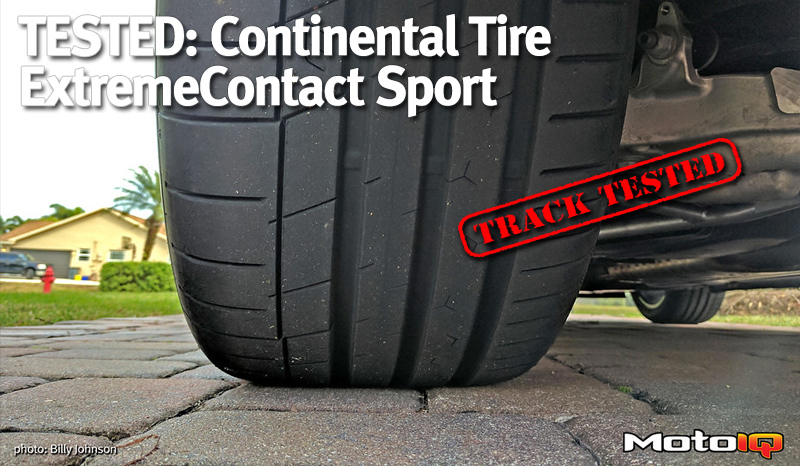
Zooming in on Turn 4 shows a significant increase in lateral grip. Where the ExtremeContact™ DW generated 0.93 Gs, the new ExtremeContact™ Sport bumped that by 0.1 Gs to produce an impressive (especially for a base Mustang) 1.03 lateral Gs. That’s a huge increase, especially when looking at the longitudinal G-force trace, the combined grip capacity was even larger.
Taking a snapshot of this point in time, the DW is making 0.93 lateral Gs and -0.16 longitudinal Gs during trail braking into Turn 4, resulting in a total of 1.09 combined Gs. By comparison, the new Sport produces 1.03 lateral Gs and -0.24 longitudinal Gs, for a total of 1.27 combined Gs, a 0.18 G combined increase over the DW! This is the reason the tire was confidence inspiring and allowed for higher entry speeds.
In-Car Video of the new ExtremeContact Sport:
In-Car Video of the old ExtremeContact DW:
Data Analysis:
In-depth data analysis reveals that the while the DW had a theoretical lap of 1:32.79 (0.16 seconds faster than its best lap), the new Sport had a much faster theoretical lap of 1:31.52 (0.35 seconds faster than it did). Due to the brake fade during the Sports laps, the lap times were not as consistent and more time was left on the table. As a racing driver, the goal is to match the theoretical best lap, so with more resilient and consistent brake pads, accomplishing that would put the Sport at 1.27 seconds faster than the outgoing DW.

Here we have the Continental ExtremeContact™ Sport (Top Left), Continental ExtremeContact DW (Top Right), Michelin Pilot Super Sport (Middle Left), Michelin Pilot Sport Cup 2 (Middle Right), GoodYear Eagle F1 Supercar G3 (Bottom Left) and Pirelli P-Zero Trofeo R (Bottom Right).
The Sport, DW, and Super Sport are competitors and belong in the UHP tire class. It is quite obvious that the DW is the outlier here with far more circumferential grooves and less rubber on the outer shoulder.
The Cup 2, Supercar G3, and Trofeo-R are also competitors in what Tire Rack calls the “Streetable Track & Competition” class and are track-focused tires that can be driven to and from the track but are not recommended in wet or near freezing conditions. “R-Compounds” fit this bill. These three are OEM-equipped in some of the fastest and track-focused production cars on the market, from the new 918, McLaren P1, LaFerrari, Ford GT, GT350R, Focus RS, Z06, Z28, ZL1, NSX, GT3RS, GT4, etc… Don’t let the name fool you, the new GoodYear Eagle F1 Supercar G3 is very sticky and a direct competitor to the Cup 2 & Trofeo-R.
All of these tires have a very similar tread theme of 2-3 wide circumferential grooves for water evacuation, and a wide outer shoulder with large tread blocks to take the brunt of the cornering load for durability and grip. Due to the nature of these dual-purpose tires that are either more street or track focused, having to meet these requirements have led all of the tire manufacturers into a similar general tread design, but upon closer inspection they are quite different, especially when it comes to tire compounding which is quite a black art.



